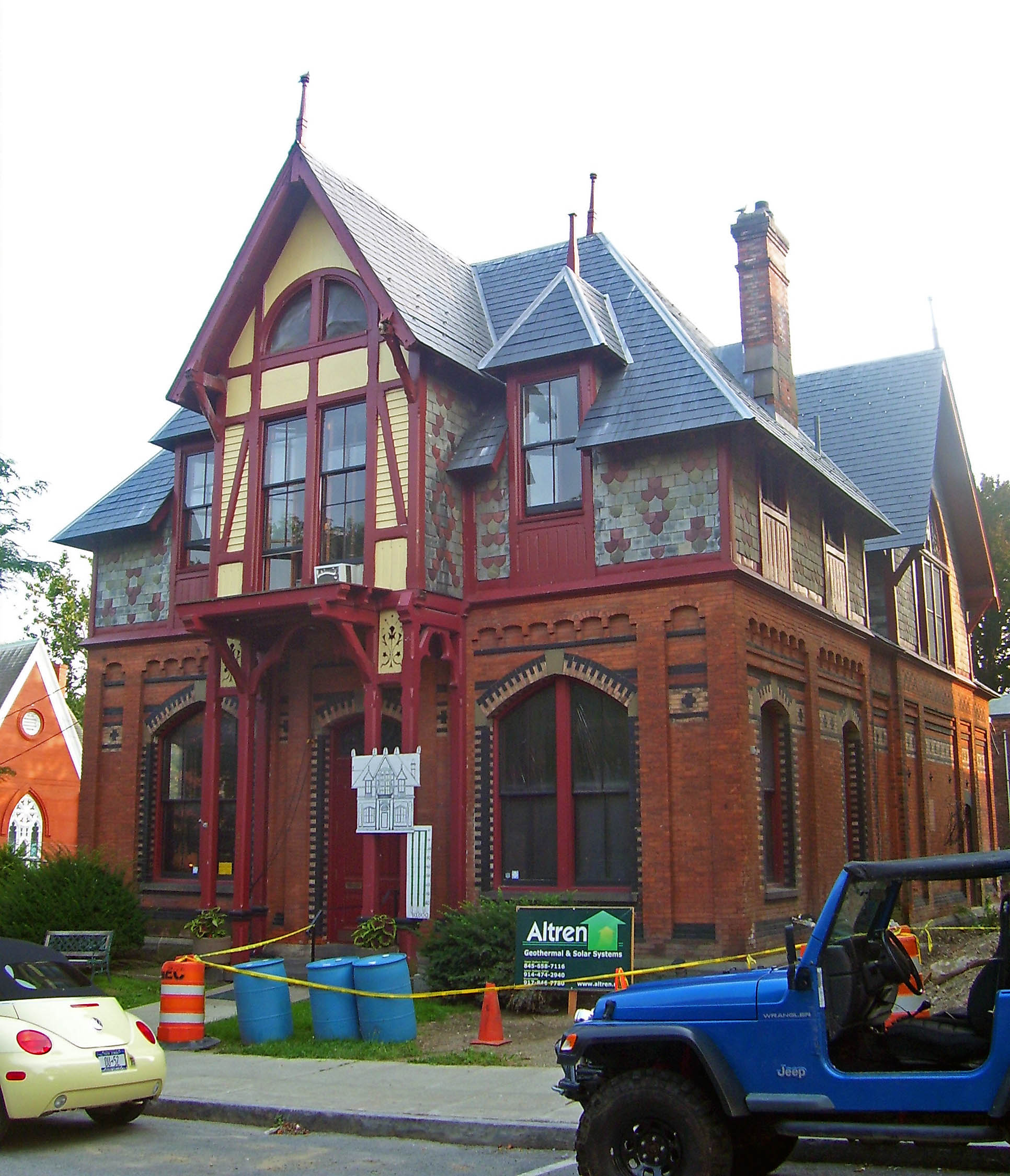- Howland Cultural Center
Infobox nrhp
name = Howland Library
nrhp_type =

caption = The building in 2007, during exterior renovations
location = Beacon, NY
nearest_city =
lat_degrees = 41
lat_minutes = 30
lat_seconds = 07
lat_direction = N
long_degrees = 73
long_minutes = 57
long_seconds = 57
long_direction = W
area =
built = 1872
architect =Richard Morris Hunt
architecture =
added = 1973
visitation_num =
visitation_year =
refnum = 73001180
mpsub =
governing_body = Howland Cultural CenterThe Howland Cultural Center, also known as Howland Library, is the former public library building of Beacon,New York ,USA . It is located on Main Street (NY 52 Business) in the city's downtown section, nearFishkill Creek .It was built in 1872 by
Richard Morris Hunt , brother-in-law ofJoseph Howland , a Beacon resident who had served as aUnion Army officer in the Civil War and, afterwards, as New York StateTreasurer . He was one of a committee of ten localbenefactor s who had joined to establish a library for their city, and commissioned Hunt for the job. It was one of the architect's earliest workscite web|title=About This Building|url=http://www.howlandculturalcenter.org|accessdate=2007-09-11] ; he would later design the base of theStatue of Liberty as well as theFifth Avenue facade of theMetropolitan Museum of Art .cite web|title=Richard Morris Hunt|url=http://www.howlandculturalcenter.org|accessdate=2007-09-13]Hunt's building uses Norwegian architectural elements. The roof features six
gable s and is tiled inDelaware slate ; the walls are red Crotonbrick interlaid with lighter Jersey brick. The foundation is made ofbluestone andgranite quarried at nearbyBreakneck Ridge .The interior of the building boasts a 34-foot (10 m)
ceiling supported by handwrought Georgiapine pillars, with abalcony on the second story. Floors are of English cane felt overlaid with hemlock, to dampen sound, and topped with strips of Georgia pine.When the library opened, its 2,200-volume collection was available only to subscribers. Later it became open to all, but by 1976 more space was needed so the library moved down Main to a newer building. The current building is now in the hands of a private non-profit organization, the Howland Cultural Center, which presents art exhibitions and other cultural activities.
In 2007, the center announced that it would be installing
geothermal heating to cut its energy costs and reduce the use offossil fuel s. A system using water in vertical pipes to be dug 250 feet (76 m) into the earth beneath the center will both heat and cool the building.cite web|title=Howland Going GREEN|url=http://www.howlandculturalcenter.org|accessdate=2007-09-13]References
External links
* [http://www.howlandculturalcenter.org Howland Cultural Center]
Wikimedia Foundation. 2010.
